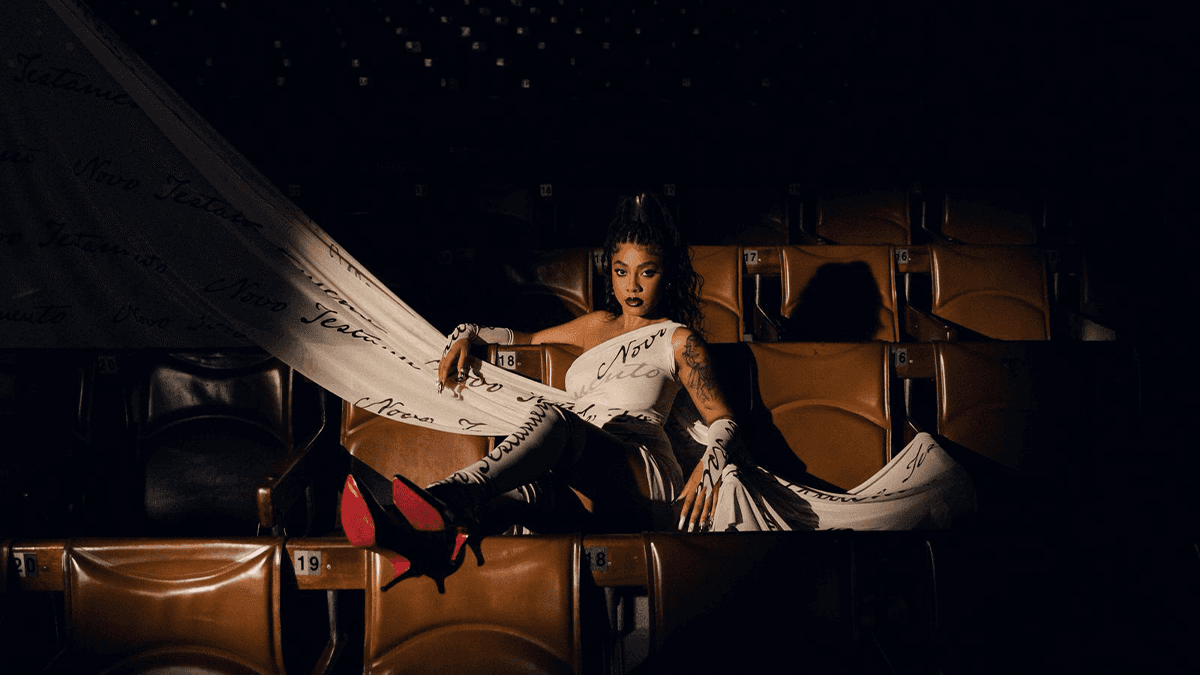Painting and training: Knesse's creative discipline
The carioca artist has been passionate about art since he was a teenager, and it was alongside surfing and skateboarding that he found his starting point. Self-taught, Douglas considers his work an exercise, where practice leads him to achieve the desired result. In a mix of painting, streetwear, and audiovisual, he captures his audience's attention through his works.

We spoke with the artist about how he started, his worldview, and the message he wishes to convey with his work. Check it out below:
Has this passion for art been present since your childhood? Or was it something that took shape over the years?
Since I was little, I have always loved to draw, I loved watching Art Attack, and I was good at inventing things. Since there was no one in my family involved in the fine arts, it had never crossed my mind to become an artist as I grew older. Art entered my life during my teenage years, and along with the world of surfing/skateboarding, I began to dive into the prints of the clothes and designs I saw on the boards.

Being a native of Rio de Janeiro, do you believe that the environment around you has influenced your artistic inclinations in any way?
Definitely! In fact, I think everything I express today in my work is nothing more than a reflection of who I am, a representation of the experiences I've had in life as a carioca.

You describe yourself as someone compulsive about painting. How does this reflect in your creative process?
I’m self-taught; I never studied anything and had no contact with art schools. Since I started painting and decided to go down this path (without formal study), I realized I had a lot to produce and even more to experiment with. Many of these productions that "go nowhere" take time, significant material accumulation, and investment… But for me, I see it as an exercise, like a sport. It’s that thing of training every day until you reach where you want to be and achieve the results you aspire to.

How do the influences of skateboarding and surfing appear in your work today?
I see that my work has always had an urban texture that comes from skateboarding, but for a long time, I wanted to hide those influences from sports. Since 2021, when I had an exhibition on the cliffs of Bahia, just like my first exhibition in 2014 (also on a beach), I started to see a lot of sense in representing that feeling that surfing, skateboarding, and everything surrounding these worlds brought me in childhood. The connection with the sea has increasingly been present in my work; I've been painting waves and symbols related to the sea that are, in themselves, extremely beautiful and have deep representativity for cariocas. Today, I feel more comfortable painting my roots.

Jiu-jitsu is also one of your influences. How does the sport relate to your work and assist you in your creative process?
Both the practice in the studio and the sport are outlets for me; they are moments that put me at "risk" to escape the stress of daily life. Jiu-jitsu, in particular, trains my resilience a lot; it’s not a sport that you learn quickly and it is not very attractive; you literally wake up early to fight lol. I like that feeling of testing yourself because every day is like any other; you are there, it can be good or bad, but the discipline of never giving up makes your mind stronger. And for me, being an artist, that is the first rule: never give up. Always believe!

How have your first experiences in solo exhibitions shaped your view of the art industry?
The scene is very closed off; the themes are very hyped, and even the way of creating is thematic—it changes with time. So, I understood that I couldn’t be shaken if I wasn’t accepted into that scene and that I had to continue creating things that are true to me.
We know you consider yourself a shy person. How does this introspection contribute to expressing the style and themes of your art?
Actually, I used to be haha. Art taught me to speak; it brought me confidence to express myself in different places and helped me understand who I am. I’ve put my joys, fears, anxieties, and prayers into my art. This connected me to these themes.

Your art mixes various languages, such as painting, streetwear, and audiovisual. How do you integrate these different worlds into your process?
Where I come from, people are not used to connecting with art. There is a very rigid perspective, and without that culture, it creates a significant barrier to seeing and wanting to understand, and for me, art is something you feel. However, in Barra da Tijuca, even that can sometimes be difficult—for me even today, I don’t have much patience. Because of this, I had to connect all these forms of expression to try to catch people’s attention more and show that the art I create is real, to convey that energy sometimes in a more digested and accessible way has been successful.
In your works, you play with symbols in a sarcastic way. What message do you want to convey to your audience?
That most of the time, things are not “right”; in fact, they work for you in that way and may work differently for others. So, these messages hit each person in a different way, based on their experiences and backgrounds.

If you could give a tip to someone, what would it be?
Always believe. Have faith and take care of your health; it may seem like it has nothing to do with art, but the art of living is the hardest today. This will make you resilient in any situation.
See others like this





